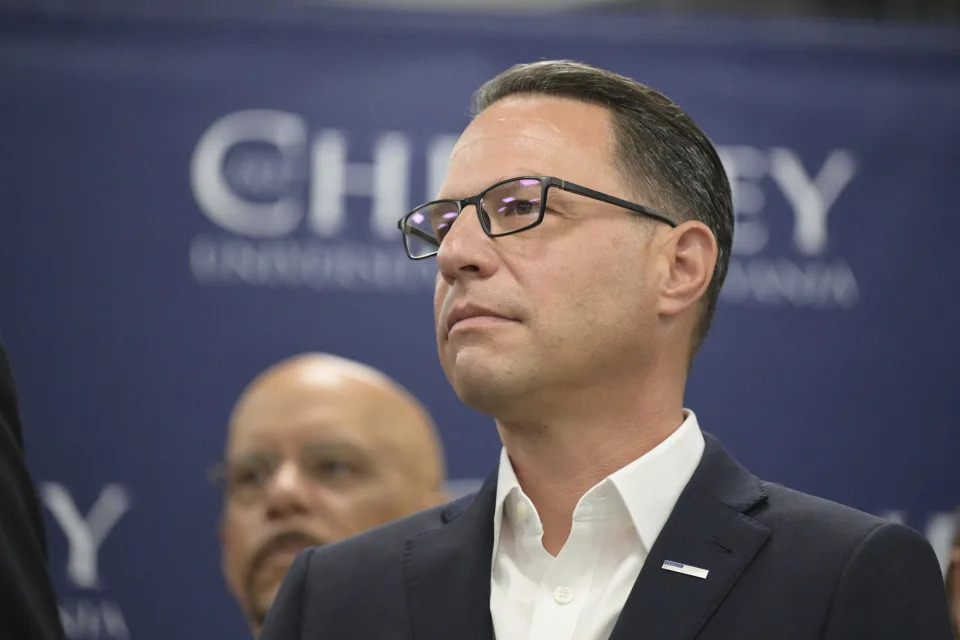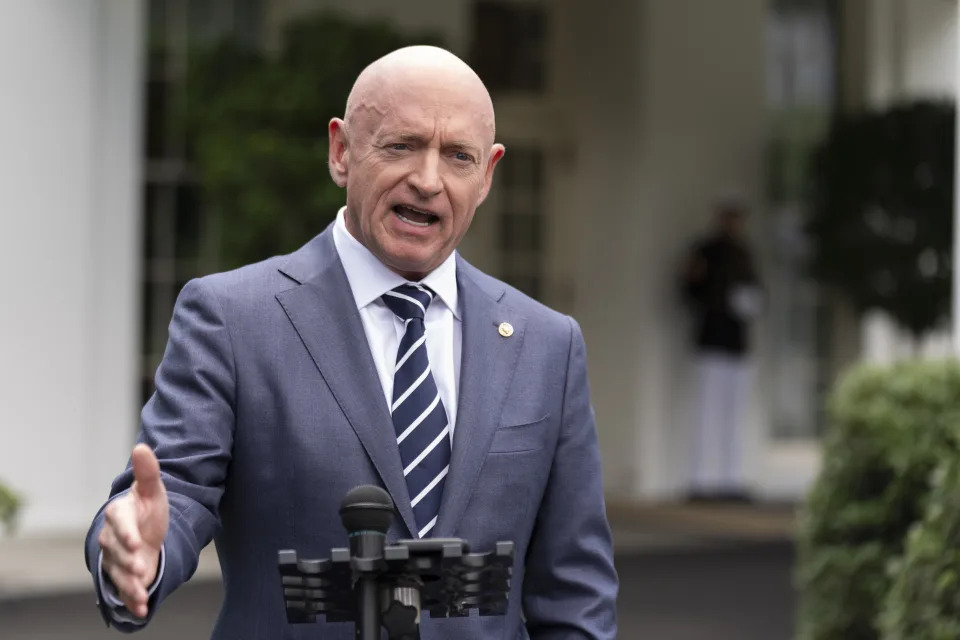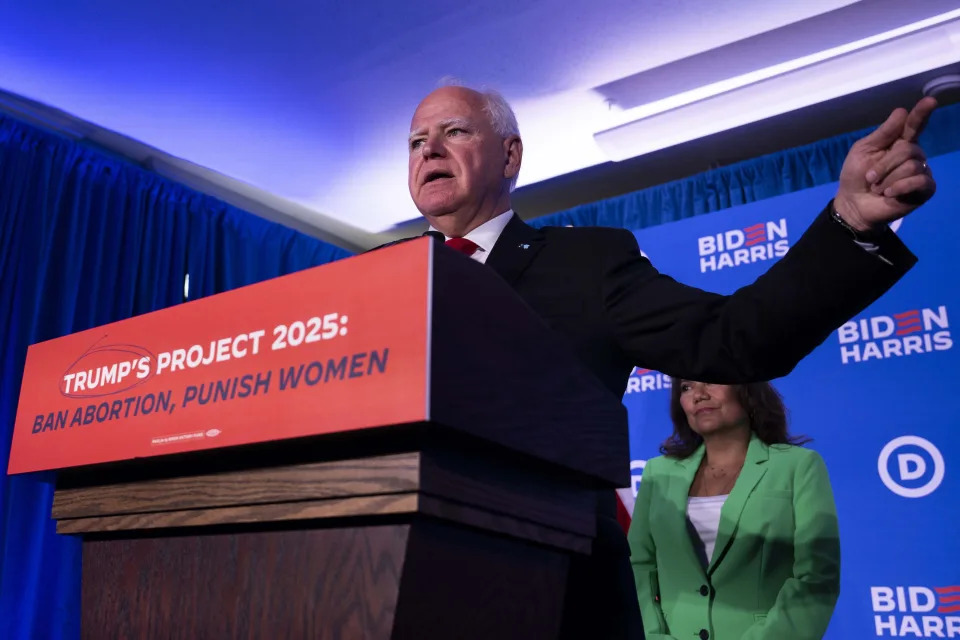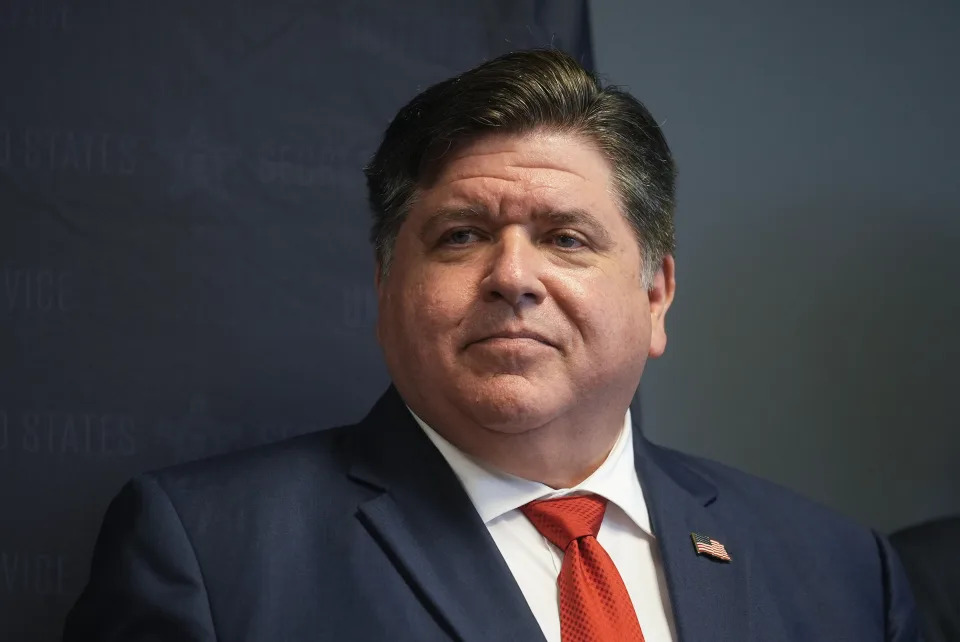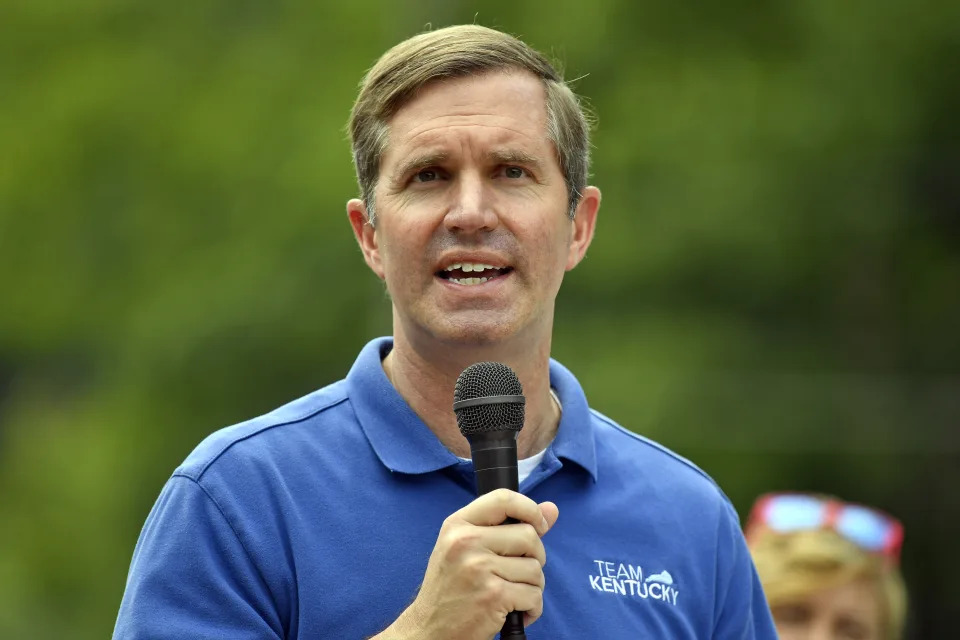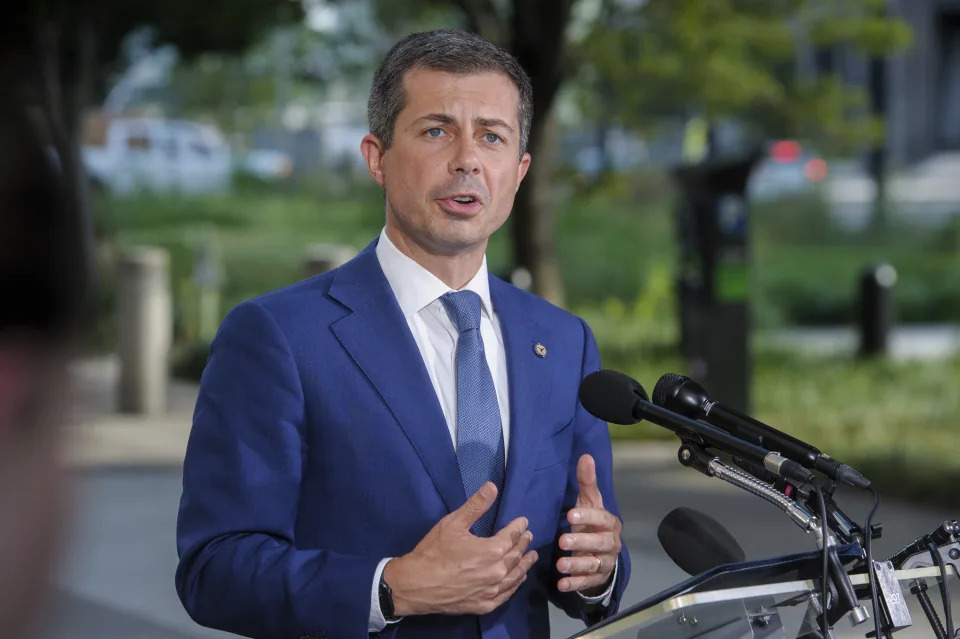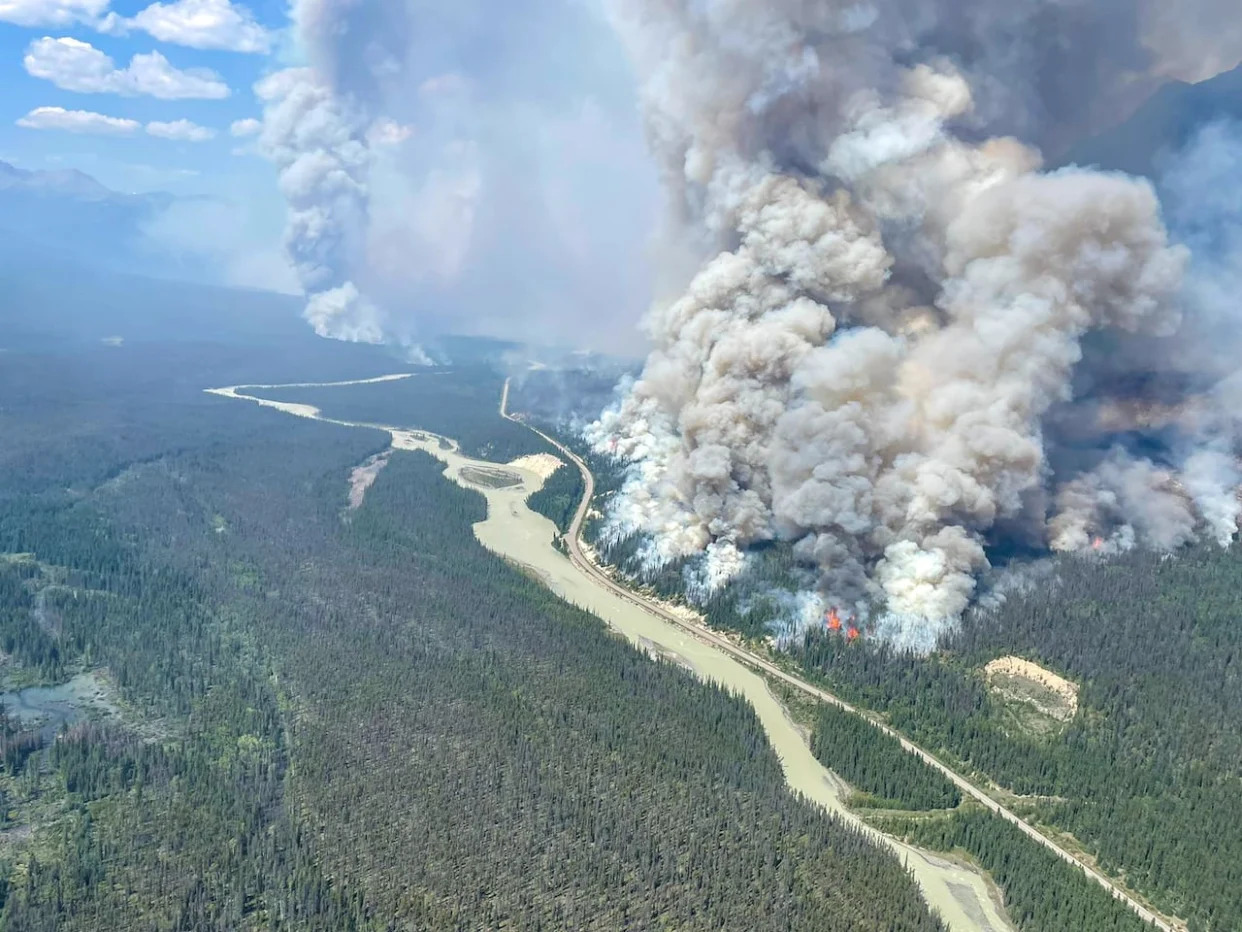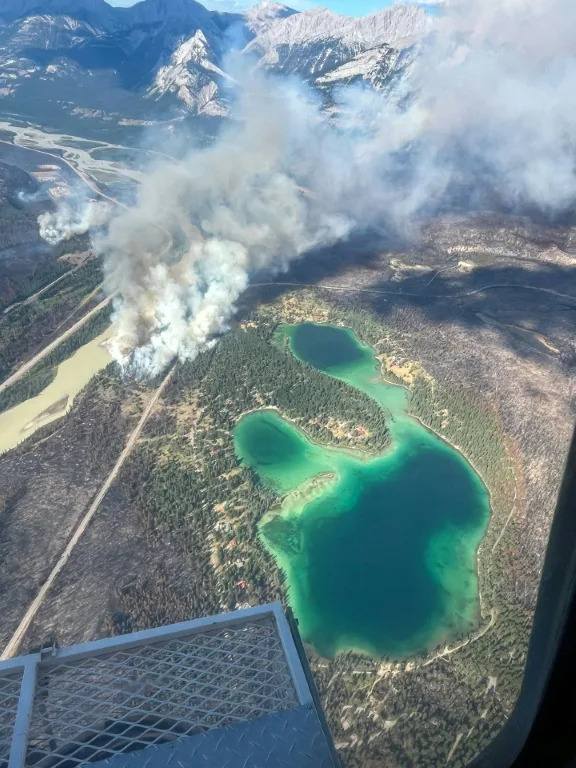Bernie Sanders and labor leaders set their sights on Gov. Tim Walz for Harris' VP
Hannah Getahun
Sat, 3 August 2024
Sen. Bernie Sanders said he backed Minnesota Gov. Tim Walz as Kamala Harris' VP pick.
Walz is seen as a candidate who understands the working class and can rally rural voters.
Labor leaders have also voiced support for Walz and applauded his support of the 2023 UAW strike.
Among the many men who could join Vice President Kamala Harris' campaign, one person stands out to Sen. Bernie Sanders: Minnesota Gov. Tim Walz.
The democratic socialist, who endorsed Harris for president, told Minnesota Public Radio on Saturday that Walz would be a candidate who "understands the needs of working families."
"I hope very much that the Vice President selects a running mate who will speak up and take on powerful corporate interests, and I think Tim Walz is somebody who could do that," Sanders said of Walz, a former teacher and rural Nebraska native.
Sanders isn't the first to point out Walz's potential to rally working-class voters. As Business Insider's John Dorman reported, Walz could help connect with rural and working-class voters who are unsure about voting blue.
Multiple Minnesota labor leaders have voiced support for Walz in an open letter to Harris, calling him an "essential partner in winning in November."
Walz also received support from United Auto Workers president Shawn Fain, who pointed out on CNN Walz's support for the 2023 UAW strike, which ended in October. Walz joined the picket line at a striking Stellantis facility in Plymouth, Minnesota.
The Midwestern Democrat has also taken it upon himself to pit his rural roots against former President Donald Trump's VP pick, JD Vance, who is from Ohio.
"People like JD Vance know nothing about small-town America," Walz said during an appearance on "Morning Joe."
Walz is among several others being considered as a Harris running mate. Other contenders include Govs. Andy Beshear of Kentucky, JB Pritzker of Illinois, and Josh Shapiro of Pennsylvania, as well as Sen. Mark Kelly of Arizona and Transportation Secretary Pete Buttigieg.
Rep. Adam Schiff predicted on Saturday that Harris' VP pick will be based on "best running mate that will help her win."
"I think it's going to be less about who does she have the best chemistry with and more about who has the best chance of helping the ticket," he told CNN.
Harris is expected to reveal her choice of running mate as early as Monday, sources told Reuters.
The Harris campaign told Politico that Harris would stage her first rally with her running mate in Philadelphia on Tuesday.
Representatives for Walz, Sanders, and Harris did not immediately respond to a request for comment.
Hannah Getahun
Sat, 3 August 2024
Sen. Bernie Sanders said he backed Minnesota Gov. Tim Walz as Kamala Harris' VP pick.
Walz is seen as a candidate who understands the working class and can rally rural voters.
Labor leaders have also voiced support for Walz and applauded his support of the 2023 UAW strike.
Among the many men who could join Vice President Kamala Harris' campaign, one person stands out to Sen. Bernie Sanders: Minnesota Gov. Tim Walz.
The democratic socialist, who endorsed Harris for president, told Minnesota Public Radio on Saturday that Walz would be a candidate who "understands the needs of working families."
"I hope very much that the Vice President selects a running mate who will speak up and take on powerful corporate interests, and I think Tim Walz is somebody who could do that," Sanders said of Walz, a former teacher and rural Nebraska native.
Sanders isn't the first to point out Walz's potential to rally working-class voters. As Business Insider's John Dorman reported, Walz could help connect with rural and working-class voters who are unsure about voting blue.
Multiple Minnesota labor leaders have voiced support for Walz in an open letter to Harris, calling him an "essential partner in winning in November."
Walz also received support from United Auto Workers president Shawn Fain, who pointed out on CNN Walz's support for the 2023 UAW strike, which ended in October. Walz joined the picket line at a striking Stellantis facility in Plymouth, Minnesota.
The Midwestern Democrat has also taken it upon himself to pit his rural roots against former President Donald Trump's VP pick, JD Vance, who is from Ohio.
"People like JD Vance know nothing about small-town America," Walz said during an appearance on "Morning Joe."
Walz is among several others being considered as a Harris running mate. Other contenders include Govs. Andy Beshear of Kentucky, JB Pritzker of Illinois, and Josh Shapiro of Pennsylvania, as well as Sen. Mark Kelly of Arizona and Transportation Secretary Pete Buttigieg.
Rep. Adam Schiff predicted on Saturday that Harris' VP pick will be based on "best running mate that will help her win."
"I think it's going to be less about who does she have the best chemistry with and more about who has the best chance of helping the ticket," he told CNN.
Harris is expected to reveal her choice of running mate as early as Monday, sources told Reuters.
The Harris campaign told Politico that Harris would stage her first rally with her running mate in Philadelphia on Tuesday.
Representatives for Walz, Sanders, and Harris did not immediately respond to a request for comment.
WILL WEISSERT
Updated Sat, 3 August 2024

WASHINGTON (AP) — Democrats have unified with remarkable speed behind Vice President Kamala Harris as she has taken over the top of the party's ticket heading into the November presidential election.
It may be another story when it comes to a running mate.
As Pennsylvania Gov. Josh Shapiro and Arizona Sen. Mark Kelly have emerged as among the possible finalists, both have faced criticism from some organizations and activists who might otherwise be supportive of Democratic causes, potentially undermining the party's newfound unity barely two weeks after Harris entered the race.
The vice president's team says she is interviewing six possible choices over the weekend before an announcement expected Monday. The next day, she and her running mate will appear together at a rally in Philadelphia, then visit six more swing states.
In addition to Shapiro and Kelly, Harris is said to be considering Minnesota Gov. Tim Walz, Illinois Gov. J.B. Pritzker and Gov. Andy Beshear of Kentucky and Transportation Secretary Pete Buttigieg.
Walz changed his weekend travel plans, but his office didn’t answer a question Saturday about whether it was for an interview with Harris. “The governor’s schedule has changed, and he is no longer traveling to New Hampshire this weekend,” Walz spokesman Teddy Tschann said.
Some congressional Democrats have promoted Kelly, a former Navy pilot and astronaut whose state has more than 370 miles of border with Mexico. They say his selection could help defuse attacks by the Republican nominee, former President Donald Trump, who argues that Biden administration's immigration policies are too relaxed.
Shapiro has high-profile supporters, too, including Philadelphia Mayor Cherelle Parker. She caused a stir by posting a video Friday depicting several Philadelphia-area officials and Democrats promoting Harris, but also playing up Shapiro as her running mate — appearing to suggest that the mayor had inside knowledge about Harris’ decision.
But a person with knowledge of the mayor’s thinking said the video was simply a case of Parker showing support for both Harris and the potential that Shapiro, Parker’s friend, would be the vice presidential pick. The person was not authorized to discuss the matter publicly and spoke on the condition of anonymity.
Both Kelly and Shapiro have also seen their detractors become more vocal as Harris' closes in on a decision.
While that may not ultimately sway Harris, it is an indication that the honeymoon period for the vice president, where the distinct wings of the Democratic Party coalesced behind her, may be ending in the less than two weeks since President Joe Biden abandoned his reelection bid and endorsed her.
Some labor groups have criticized Kelly, saying he opposes proposed legislation they argue would boost union organizing. The senator's office counters that while he did not co-sponsor the proposed legislation, he has said he would vote for it on the floor.
Still, Shawn Fain, president of the United Auto Workers, said that despite backing Harris for president, his 370,000-member union is not supporting Kelly as a potential running mate. Fain also said the union does not favor Shapiro, who has previously proved willing to join with Republicans in calls to expand voucher programs that allow public tax dollars to flow to private schools.
Fain did single out Beshear, Walz and Pritzker for praise.
“She’s probably got a thousand people telling her the same thing, you know, of what they think,” Fain said in an interview. “And so she’s got to make the decision based off of what she feels is, you know, is best for her.”
The nonprofit Institute for Middle East Understanding has been publicly vocal, saying in a statement that Shapiro “is not the right candidate for the job, and selecting him would be a step in the wrong direction.”
Shapiro, who says he plans to be at Harris' rally Tuesday in Philadelphia, has aggressively confronted what he views as antisemitism cropping up from pro-Palestinian demonstrations and he has professed solidarity with Israel in its drive to eliminate Hamas as it Israel battles the militants in Gaza.
Shapiro called out universities for not acting quickly to tackle antisemitism and he became a prominent critic of the University of Pennsylvania’s president, Liz Magill. She resigned after testifying at a congressional hearing where she was unable to say under repeated questioning that calls on campus for the genocide of Jews would violate the school’s conduct policy.
Shapiro has also criticized Israeli Prime Minister Benjamin Netanyahu, while suggesting that any end to the Israel-Hamas war requires the removal of Hamas from power.
The governor has been criticized by the Council on American-Islamic Relations for not condemning Israel for the killing of civilians in Gaza or for not calling for Israel to stop the fighting in the territory. Shapiro has countered that he has met with Muslim Americans and understands their pain.
The progressive activist organization RootsAction.org opposes Shapiro’s views on Israel, school vouchers and the environment, among other issues. It says that in considering Shapiro, Harris “has set off alarm bells among young people, racial justice organizers, Arab Americans, Muslims and others whose votes and campaign activism were crucial to defeating Trump four years ago.”
Meanwhile, The Philadelphia Inquirer resurfaced an opinion article Shapiro wrote in 1993 as a 20-year-old college student at the University of Rochester where he said peace “will never come” to the Middle East and that Palestinians were “too battle-minded” to coexist with Israel.
Asked about it, Shapiro responded, “I was 20” adding that he long has supported a two-state solution to the Palestinian-Israeli conflict.
“It is my hope that we can see a day where peace will reign in the Middle East,” he said.
Also opposing Shapiro are some environmental leaders and residents of the rural town of Dimock, Pennsylvania. They have drafted a letter to Harris urging her not to choose Shapiro and charging that the governor failed to keep his promises to clean up area groundwater contaminated by natural gas production via hydraulic fracturing.
___
Associated Press writers Marc Levy in Harrisburg, Pennsylvania, Josh Funk in Omaha, Nebraska, and AP Auto Writer Tom Krisher in Detroit contributed to this report.
